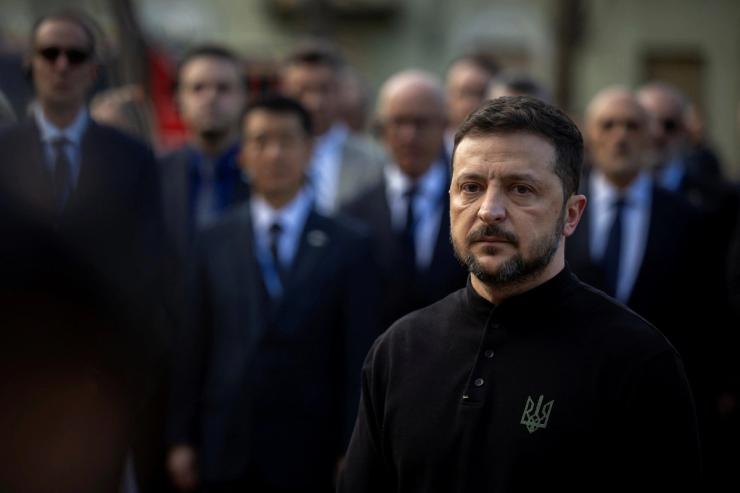The News
Russian President Vladimir Putin announced a surprise three-day ceasefire in Ukraine from May 8-10, with the Kremlin releasing a statement citing “humanitarian considerations” as the reason.
The White House press secretary said that US President Donald Trump wanted a permanent ceasefire and that he is “increasingly frustrated with leaders of both countries.” Ukraine also responded, saying that it wants a ceasefire for at least 30 days.
It comes as pressure grows on Kyiv to accept a US-brokered peace deal, while Washington’s patience with Russia appeared also to be wearing thin.
US Secretary of State Marco Rubio said the Trump administration will this week decide whether to continue pursuing a settlement to end the three-year war, but the deal would involve Kyiv ceding Crimea, annexed by Moscow in 2014.
Trump said Ukrainian President Volodymyr Zelenskyy was open to the deal, but Kyiv has previously rejected giving up Crimea.
SIGNALS
Putin may want brief truce to shore up Victory Day celebrations
With Russia’s 80th anniversary of the Soviet Union’s victory of Nazi Germany coming up, analysts suspect that this ceasefire is meant to ensure celebrations proceed smoothly. “The Kremlin wants a ceasefire for those days because it can’t suitably defend airspace from Ukrainian drones and they want a smooth 80th anniversary victory day parade,” Russia expert Dara Massicot said. The offer is a sign that “negotiations are far from over,” a former aide to Vladimir Putin argued, noting that it ruled out the possibility of Donald Trump achieving peace within his first 100 days in office: France’s top diplomat had derided Russia’s recent one-day Easter truce as a “a charm operation aimed at preventing President Trump from becoming impatient and angry.”
Russia sticks to a hardline negotiating position
Even as Vladimir Putin declared a second temporary ceasefire, Russian officials reiterated their maximalist terms. Foreign Minister Sergei Lavrov said Russia would demand “demilitarization and denazification,” as well as international recognition that Russian-occupied territory belongs to Moscow, and the return of Russian frozen assets — terms far beyond what the Trump administration has envisioned. A ceasefire without demilitarization and changes to Kyiv’s political system is not in the Kremlin’s interest, a Moscow-based analyst argued, and would likely lead to the conflict restarting in the future. While Moscow “probably will” back down from some demands in talks, the Kremlin appears to have concluded that it could secure further concessions having been emboldened by the White House’s conciliatory approach, a Russian expert said.
Is a bad deal better than no deal for Ukraine?
Analysts are divided over whether Ukraine should take the deal that the White House has outlined, which would see Kyiv give up on NATO membership, receive a “robust security guarantee” from Europe, and sanctions lifted on Russia. “Awful though it is to contemplate, this ultimatum is probably the best deal Ukraine is going to get,” Russia expert Mark Galeotti said, arguing that the deal could still allow Ukraine to become a “hedgehog” — so prickly that Moscow will think twice about restarting the conflict. But some analysts fear the peace negotiations will only allow Russia to recover and go again tomorrow.” Militarily, Ukraine is not in need of an immediate deal: “The front is not about to collapse,” military analyst Michael Kofman said, noting “Ukraine is not in a desperate position and does not need a ceasefire right now.”


